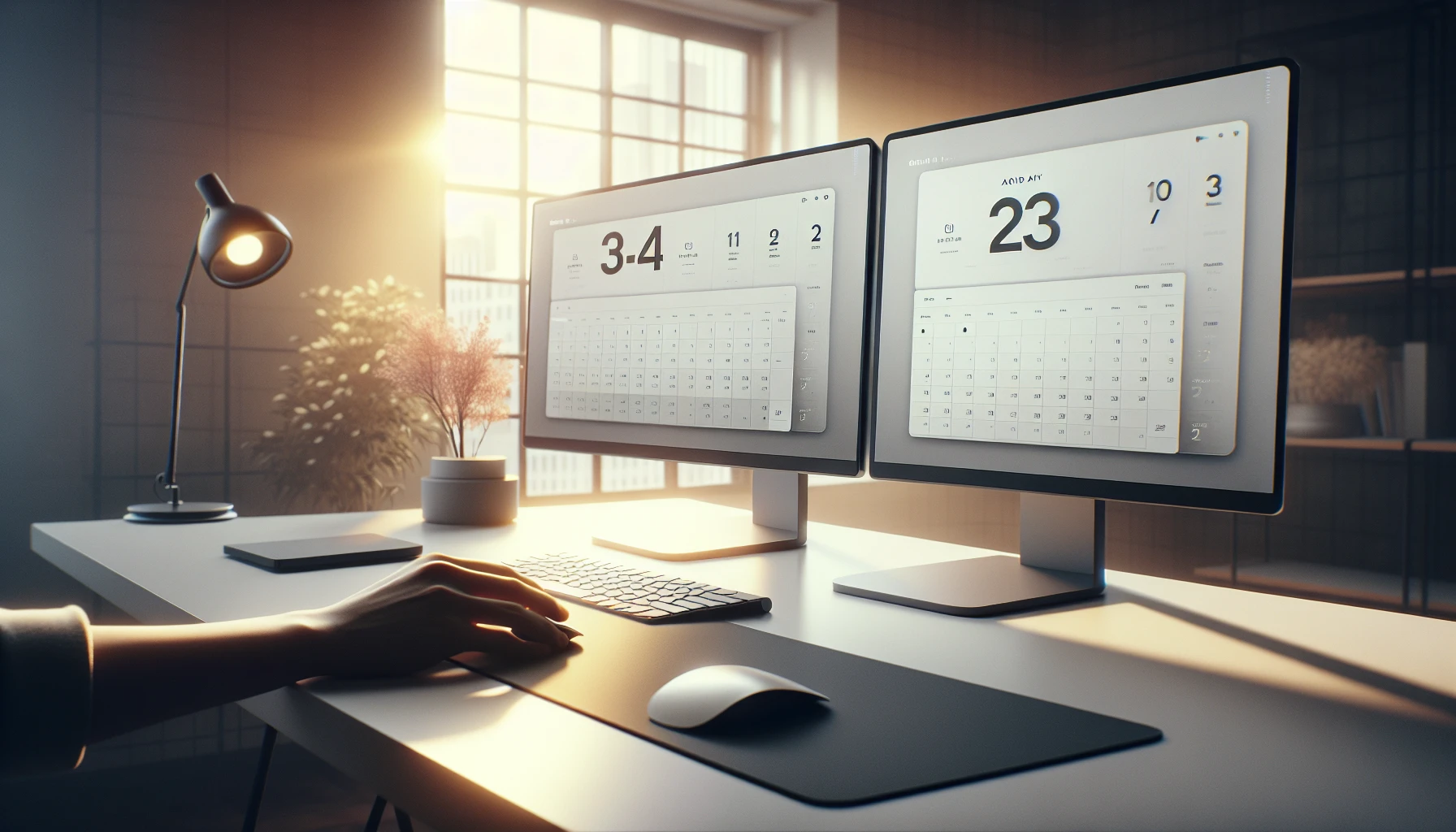· Ricardo Batista · 12 min read
Master Effective Invitation Reminder Tips
Learn how to master effective invitation reminder tips for ensuring high attendance and successful outcomes for gatherings or occasions.

Within event planning & coordination’s domain, invitation reminders’ efficacy can’t be overstated. Mastering timely reminders’ crafting & sending is crucial for ensuring high attendance & successful outcomes for gatherings or occasions. This piece explores strategies, tools, & best practices for creating impactful invitation reminders that resonate with your audience.
Key Takeaways
- Putting together good reminder messages is key for event triumph, guaranteeing lots of people show up & get involved.
- Utilizing automation tools like Meeting Reminders can streamline the reminder process and save time.
- Tracking metrics such as open rates and click-through rates helps analyze the effectiveness of reminder messages.
- Customizing stuff, changing tactics based on responses, & utilizing templates can boost the effect of reminder messages.
- Constant tracking, enhancement, & tweaking of reminder tactics founded on info are crucial to boosting the potency of invitation reminders.
Understanding the Importance of Invitation Reminders
Why Reminder Messages are Crucial for Event Success
Invitation reminders play a crucial part in the achievement of any happening. They act as a push to potential participants, strengthening the significance & immediacy of an upcoming occasion. In our fast-moving world, where folks are overwhelmed with relentless data and obligations, reminders assist your event to be noticeable. They guarantee that your happening remains at the front of invitees’ minds, decreasing the chance of no-shows & last-second cancellations. Impactful reminder messages can considerably enhance involvement by maintaining the communication channels open and making attendees feel appreciated & anticipated.
Impact of Timely Reminders on Attendance Rates
Transmitting notifications at calculated periods can significantly boost participation levels. As an illustration, a notification seven days prior to the occasion assists participants in clearing their agendas, while a reminder 24 hours beforehand or on the morning of the event prevents last-minute lapses. Resources like Meeting Reminders streamline this procedure, guaranteeing that your attendees receive timely notifications without necessitating manual oversight of each communication. This utility integrates flawlessly with Google Calendar & dispatches alerts if participants fail to show up, thereby conserving time & enhancing the productivity of your event coordination process.
Furthermore, platforms like Meeting Reminders permit you to modify the timing & frequency of notifications, making it simpler to accommodate the particular requirements of your occasion & audience. By automating reminders, you don’t just guarantee consistency in communication but additionally liberate valuable time to concentrate on other essential facets of occasion preparation. For additional insights on establishing compelling reminders, think about investigating articles like how to compose a reminder email for meeting, which give detailed direction on making impactful reminder correspondences.
Key Elements of an Effective Invitation Reminder
Essential Information to Include
A good invite alert ought to briefly express all key info regarding the happening. This covers the date, hour, location, & reason for the event. It’s additionally advantageous to repeat any required actions they need to take, like confirming attendance or getting ready particular items. To guarantee clearness, format this data prominently, making it simple for recipients to rapidly scan. Tools like Meeting Reminders can be useful in this procedure, as they permit you to implant crucial subtleties straightforwardly into the update notices sent through Google Calendar.
Choosing the Right Tone and Language
The style & language of your invitation alert ought to match with the kind of the occasion & your connection with the recipients. For proper events, a courteous & expert tone is fitting, while a more relaxed or friendly vibe may be okay for less formal get-togethers. To ensure a polished and professional look, you can create printable invitations that align with your event’s branding. The crucial thing is to keep it clear & polite, ensuring the message is respectful yet engaging. Personalizing the message can also increase its effect, making the recipient feel valued & more inclined to attend.
Utilizing a service like Meeting Reminders not just streamlines the procedure of transmitting these notifications however likewise guarantees they’re conveyed in a convenient way, expanding the probability of a good reaction. For more nitty gritty direction on making these messages, consider investigating assets like how to compose update email for gathering, which offers tips & layouts to upgrade your correspondence technique.
Tools and Platforms for Sending Invitation Reminders
Overview of Popular Reminder Tools like Textline and LiveAgent
In the digital era, many tools & platforms help send effective invitation reminders. Textline is known for its strong features like text payments & group messaging, which can be utilized to send quick reminders directly to attendees’ mobile devices. Likewise, LiveAgent offers a complete set of services including a fast live chat & social media integration, making it feasible to interact with attendees across various platforms efficiently.
For those putting together formal get-togethers or happenings, Meeting Reminders provides a specialized answer. This tool combines with Google Calendar & mechanically dispatches notifications to attendees who aren’t appearing, guaranteeing that all participants are reminded of the meeting without needing manual follow-ups.
Integrating Social Media and Email Platforms
Blending social networks & email platforms for delivering invitation alerts can massively boost the scope & impact of your messaging. Channels like Facebook, Instagram, & Twitter enable the spread of swift reminders that can involve a wide crowd. Moreover, email stays a pillar of expert communication. Resources like MailChimp or Constant Contact offer advanced choices for scheduling & automating email alerts, packed with tracking tools to monitor open rates & engagement.
Merging these utilities alongside a platform like Appointment Alerts could generate a smooth notification arrangement. Through establishing automated notifications via your preferred email application & connecting these to your Google Calendar through Appointment Alerts, you could guarantee no participant remains uninformed. For more thorough tactics on incorporating these tools, contemplate investigating resources like how to compose reminder email for gathering, which offers knowledge into crafting compelling email communications.
Crafting Effective Reminder Messages
Templates and Examples for Different Occasions
• Crafting impactful reminder messages necessitates a combination of clarity, timeliness, and relevance. For different occasions, the structure of the message may slightly change but the core elements stay consistent. Here are a few templates to think about:
- Corporate Meeting Reminder:
- Subject: Reminder: [Meeting Name] on [Date]
- Body: Hey [Name], just a heads up that we’ll be having [Meeting Name] on [Date] at [Time]. You’ll find the schedule included. Anticipating your important input.
- Webinar Reminder:
- Subject: Starting Soon: [Webinar Name]
- Body: Yo [Name], a fast note that our online class on [Topic] kicks off in 24 hours & days. Here’s the connection to participate: [Webinar Link]. Don’t skip out on the knowledge!
- Social Event Reminder:
- Subject: Are You Ready? [Event Name] Tomorrow!
- Body: Hey [Name], only one day remaining till [Event Name]! We’re super excited to see you at [Venue] around [Time]. Don’t forget, dress to look your best!
For more specialized templates, tools like Meeting Reminders provide customization choices that cater to the particular requirements of your occasion, guaranteeing that your notifications are always on target.
Tips for Personalization and Engagement
Customization could seriously boost the impact of your memory prompts. Here’s advice to guarantee your reminders are captivating:
Utilize the receiver’s designation: Customized communications frequently possess elevated open percentages. Basic personalization, like incorporating the recipient’s appellation, can render the message to appear more tailored & less generic.
Give an obvious request: Simplify it for recipients to comprehend what’s anticipated from them. Whether it’s responding, clicking a hyperlink, or getting ready for a gathering, your request ought to be straightforward & noticeable.
Maintain it short yet enlightening: Though it’s crucial to retain the communication succinct, guarantee every essential particular is incorporated. Time, date, location, & objective ought to be obviously articulated.
Put a unique touch: Anytime feasible, include a personalized message or a kind reminder of the occasion’s significance that could connect on a private level with the participant.
Blending these tactics alongside a utility like Meeting Reminders boosts the procedure by automating the personalization & dispersal of messages, guaranteeing timely & productive communication. For additional insights on improving your reminder approaches, investigate resources like how to compose reminder email for gathering, which offers thorough guidelines & supplementary templates.
Automating the Process of Sending Reminders
Using Automation Tools like Automizy
Simplifying the procedure of transmitting invitation notifications can substantially enhance your occasion administration workflow. Instruments like Automizy provide sophisticated abilities for establishing automated email promotions that could be initiated based on particular actions or timelines. Here’s the way to establish an automated reminder framework utilizing Automizy:
- Create a Contact List: Compile a list of all event attendees and import it into Automizy.
- Make Your Email Layout: Employ Automizy’s template creator to build a skilled & captivating reminder message. Incorporate crucial occasion specifics and a distinct call-to-action.
- Establish Automation Prompts: Determine activations founded on the schedule of your happening. For instance, establish a prompt to dispatch a reminder one week prior to the event & another on the morning of the event.
- Observe & Enhance: Once the promotion is active, utilize Automizy’s analysis instruments to follow open percentages & participation, permitting you to modify your notifications for improved execution.
Setting Up Reminder Schedules and Triggers
Efficient prompt frameworks revolve around timing. With tools like Meeting Reminders, you can mechanize the planning of prompts directly inside your Google Calendar. Here’s a step-by-step guide to establishing prompt schedules & triggers:
- Install the Meeting Reminders Add-on: Add the Meeting Reminders tool to your Google Calendar.
- Adjust Your Notification Preferences: Establish the alerts for every occasion by determining the timing of the notifications, like a day prior or an hour before the event.
- Automate Follow-Ups: If participants don’t appear, Meeting Reminders is able to automatically transmit follow-up notifications to guarantee maximum participation.
By combining these instruments, you can guarantee that your participants are continuously well-versed & reminded of forthcoming happenings in a punctual fashion, thereby boosting attendance & involvement. For additional knowledge on automating reminder frameworks, investigate thorough guides like how to compose reminder email for gathering, which can assist you in crafting compelling reminder emails.
Analyzing the Effectiveness of Your Invitation Reminders
Metrics to Track and Analyze
To measure the achievement of your invitation alerts, it’s vital to monitor particular data that offer understandings into their efficacy. Main metrics comprise:
- Open Percentages: This measurement displays the proportion of people who opened the reminder messages. Elevated open percentages usually imply that your subject headings are captivating & pertinent.
- Click-through Percentages (CTP): Evaluates how many individuals tapped on hyperlinks inside the message, like instructions to the location or RSVP connections. This is a straightforward sign of involvement.
- Conversion Percentages: Monitors what number of the people who got the message did the wanted thing, like signing up for the happening or confirming they’ll be there.
- Bounce Percentages: Elevated bounce percentages could signal troubles with your email list, like obsolete or wrong email addresses.
Tools like Meeting Reminders blend with your schedule & email frameworks to give insights on which notifications are most compelling and which participants need extra follow-through.
Adjusting Strategies Based on Feedback and Data
Once you’ve gathered info on your reminder messages, the next move is to examine this data to enhance your approach:
- Assess the Time & Recurrence: If prompts are delivered excessively soon or frequently, they could get overlooked. Modify the timing based upon responses & open percentages.
- Customize the Stuff: If some messages got opened more, look at what made ‘em work better. Use alike words or setup in future reminders.
- Divide Your Crowd: Diverse bunches might react improved to various sorts of messages. Partition your crowd founded on their conduct & inclinations, and customize the updates as needs be.
By continuously tracking these indicators & modifying your tactics, you can boost the potency of your invitation reminders, guaranteeing maximum participation & involvement at your gatherings. For more in-depth tactics on optimizing your reminder messages, contemplate delving into resources like how to compose reminder email for gathering, which offers insights into crafting compelling communications based on audience info.
Conclusion
In conclusion, mastering the skill of crafting & sending impactful invitation reminders is crucial for guaranteeing the achievement of your events. By grasping the significance of well-timed reminders, incorporating vital components in your messages, utilizing tools & platforms for automation, & evaluating the efficacy of your tactics, you can substantially enhance attendee involvement & participation. Tools like Meeting Reminders provide valuable solutions to streamline the reminder process & improve communication with event attendees. By tracking metrics, adjusting strategies based on feedback, & continuously optimizing your reminder messages, you can create a smooth & engaging experience for your audience. Remember, the key lies in personalized, timely, & relevant communication to maximize the impact of your invitation reminders.
Frequently Asked Questions (FAQs)
How can I automate the process of sending invitation reminders effectively?
To automate the process of sending invitation reminders efficiently, you can utilize tools like Meeting Reminders. By integrating with your calendar & email systems, Meeting Reminders can automatically send notifications to attendees who are not showing up, saving you time & ensuring timely communication.
What metrics should I track to analyze the effectiveness of my invitation reminders?
To examine the success of your invitation alerts, it’s crucial to monitor data like open percentages, click-through ratios, conversion numbers, & bounce figures. These metrics give valuable insights into how recipients are interacting with your reminders & help you refine your tactics for improved outcomes.
How can I adjust my reminder strategies based on feedback and data?
Grounded on input & statistics examination, you could modify your memory jogger tactics by assessing the timing & regularity of reminders, customizing the subject matter grounded on prosperous dispatches, & dividing your crowd to tailor reminders to their tastes. Persistent scrutiny & enhancement are pivotal to boosting the efficacy of your memory jogger messages.
What are the key elements to include in an effective invitation reminder?
Crucial components to incorporate in an efficient invitation reminder are the date, time, location, reason for the event, & any required actions attendees must take. Crafting straightforward & succinct messages with these vital details ensures that recipients possess all the info they require to be present at the event.
How can I craft engaging reminder messages for different occasions?
To make engaging reminder messages for different events, you can utilize templates designed for specific occasions like business meetings, online seminars, or social get-togethers. Customizing the messages, offering clear instructions, keeping the content informative yet concise, & adding a personal touch can boost the engagement of your reminder communications.



